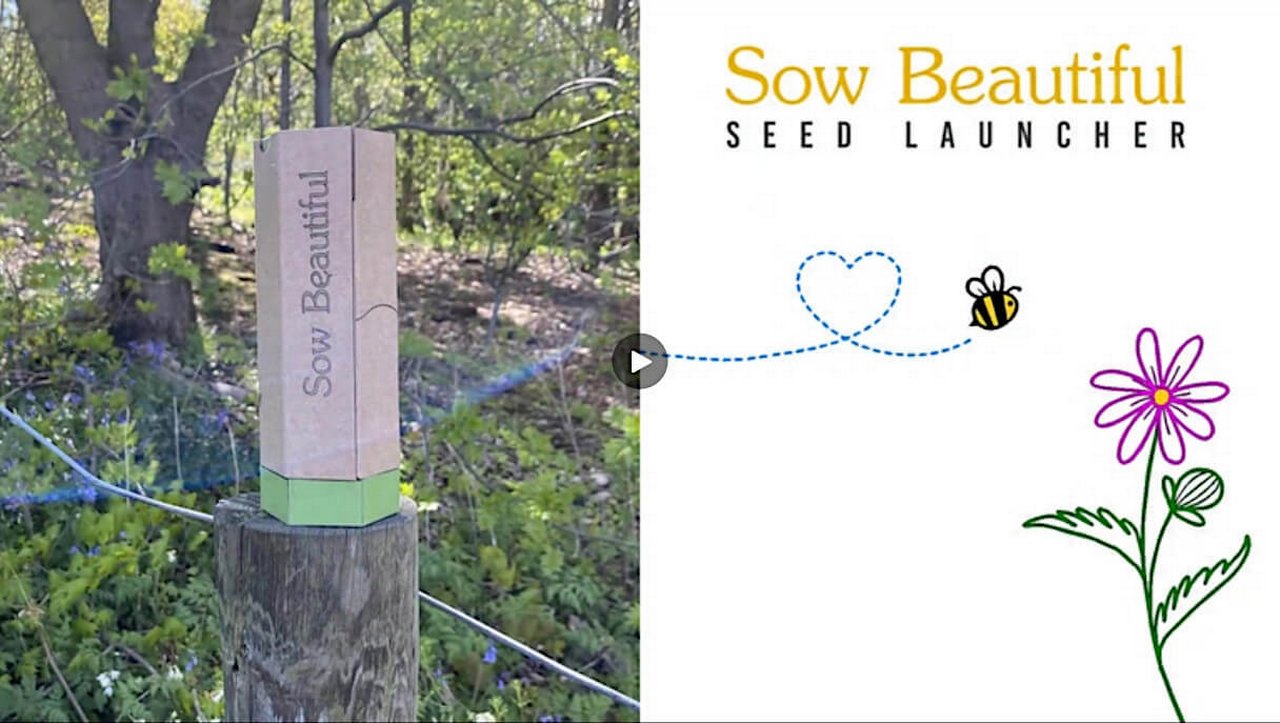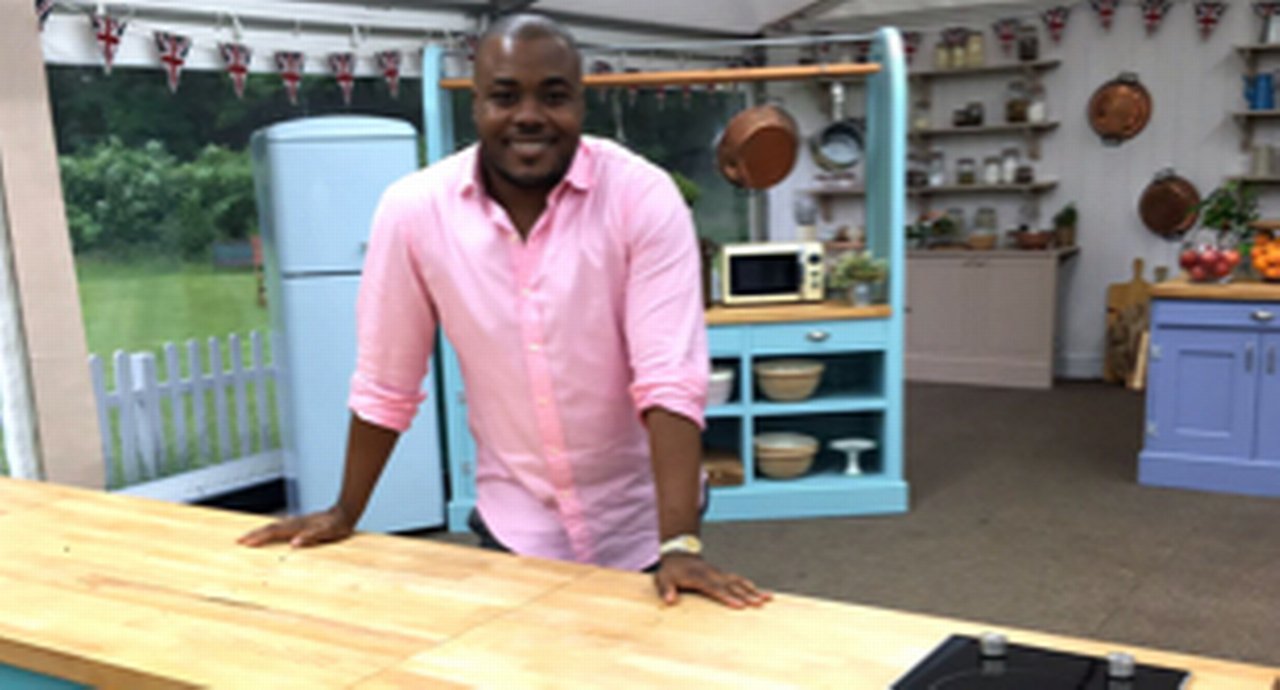05 August 2021
It is never too soon for a child to get excited about Design and Technology, and the UK needs more of its schoolchildren opting for design as a career. Clarissa Dann reports on how the Design Museum and Deutsche Bank’s flagship schools’ enterprise programme, Design Ventura, is supporting teachers and students across the UK
MINUTES min read
Howard Stevens is a very happy schoolteacher. Four pupils from Heckmondwike Grammar School in West Yorkshire where he teaches Design and Technology have won the prestigious 2020 Design Ventura, the Design Museum and Deutsche Bank’s annual design and enterprise competition for schools with their “Sow Beautiful” wildflower seed cannon concept. Soon, their prototype will be turned into a real product and sold in the Design Museum Shop.
Naomi, Alice, Emily and Hannah collected their award at the Design Museum in London on 11 June 2021; an event that was all the more special to the girls after 15 months of Covid-19 lockdowns
Path to the podium
Run in partnership with Bank’s Corporate Social Responsibility (CSR) youth engagement programme Born to Be,1 Design Ventura is an important part of the school curriculum where students in years 9, 10 and 11 tackle a live design brief set by a professional designer. It is now in its 11th year having celebrated its tenth anniversary with the 2020 competition.
“When you see how long and how deeply this unique design competition has become embedded in the school curriculum across the UK, it’s clear that Design Ventura has helped to demonstrate the multitude of educational benefits Design and Technology can offer students,” says Christoph Woermann, Deutsche Bank’s Corporate Bank Chief Marketing Officer, and one of the competition’s judges.
“The skills students develop through their Design Ventura journey, such as confidence, flexibility and resilience, are important for everyday life. They learn about pricing, how to communicate their ideas and work as a team. Some students have gone on to be professional designers and entrepreneurs, others have gained skills that have helped them get into university, secure work experience or land their first job,” adds Lareena Hilton, Global Head of Brand Communications and CSR at the Bank. She points out that “the past year has been an exceptionally challenging one for schools” and that Deutsche Bank is “delighted that Design Ventura continues to shine a spotlight on young talent”.
“We need to encourage young people. Let them know that you can make a career out of design”
Design Ventura follows the process of responding to a real design brief to give students an experience of life as a creative. This year’s design brief was set by artist and designer Yinka Ilori, whose designs, inspired by his British Nigerian heritage, have graced Selfridges shop windows, The Dulwich Picture Gallery and Cannes Film Festival.2
“I wish I had had a programme like Design Ventura when I was younger,” says Ilori. “We need to encourage young people. Let them know that you can make a career out of design.”
More than 15,600 students from 290 schools participated in the 2020 programme and the seven shortlisted teams have their work on display at the Design Museum until 22 August with the winning product “Sow Beautiful” being manufactured for sale in time for Christmas. All proceeds from finished product sales go to The Kirkwood – a local hospice selected by the Heckmondwike Grammar School students because of the important support it provides to the local community, especially during the Covid-19 pandemic.
Within Heckmondwike Grammar School alone (so imagine this multiplied by as much as 290) there was a substantial internal competition to be put forward. Stevens confirmed that 16 student teams went through all the project materials, watched the designer’s briefing video, came up with their own design responses to the brief and delivered an internal pitch to the rest of the class. A combination of peer and teacher assessment graded each one on three criteria: (a) how well they presented; (b) the quality of the presentation boards; and (c) the actual idea itself.
As a former professional industrial designer of bespoke office furniture, Stevens is absolutely passionate about the younger generation coming up with ideas that could actually find their way into the economy. Asked why he gave up commercial design for teaching, he explains, “An opportunity came up, so I thought I’d pass some knowledge on to the next generation. Twelve years later, here I am, and absolutely loving the job.”
Dealing with Covid-19 restrictions
Many of the schools that took part this year ran the programme in the autumn term of 2020 when schools were open but operating in year group bubbles. “We were quite lucky in that we got most of the project done before the restrictions came in,” Stevens told flow during a rare moment of calm in a coffee break. He explained that because of the pandemic, trying to get down to the Design Museum and look at other items in the gift shop was “very difficult” so “we just tend to use the Design Ventura online resources”.
“The creative process requires students to be bold when exploring new concepts without fearing the misconception of 'failure'”
Support includes free teacher continuing professional development (CPD) events, including live online sessions that include pathways to the Goldsmith College MA in Design Education, webinars with leading designers, as well in school and online workshops led by industry professionals. Because of the pandemic, the Design Museum could not offer museum workshops in 2020 so these were delivered in schools and online instead. For Design Ventura 2021−22, says Project Manager Poppy Parry, “We are offering museum, online and in school workshops”.
For such a hands-on project, Design Ventura 2020 was quite unlike any other year in its ten-year history. Parry explains, “A lot changed in the context of the Covid-19 pandemic, especially for schools. Design Ventura continued to run throughout lockdown, but 2020 saw some key changes – the extension of the programme to run over two terms and the creation of even more online resources.”
She adds, “In this most unusual year, we were amazed by the resourcefulness of teachers and the resilience of students, who continued to meet everyday challenges with incredible creativity. To support remote learning, we ran an online mini challenge for years 7 and 8 that received more than 3,000 entries, created an online ideas generator (theideamachine.org) used by 16,000 people, and a paper forms workshop video was viewed more than 6,000 times.”
Buzz, buzz, buzz

Right from the outset, Heckmondwike students Alice, Emily, Hannah and Naomi (pictured left to right above) latched onto the sustainability requirement of the brief and wanted to do something to promote wildflower growth and tackle the declining bee population. All sorts of ideas ended up on the cutting room floor, but as Stevens explains, part of design is trying and failing until something comes right (remember James Dyson’s 5127 prototypes for his vacuum cleaner?). “The creative process requires students to be bold when exploring new concepts without fearing the misconception of 'failure'," he reflects.
None of these birthing pains were evident in the highly professional pitch video entitled Bring the Buzz Back to Britain, that wowed the judges. The winning idea was a prototype of a sustainable seed launcher called Sow Beautiful.3
Sow Beautiful pitch video
Source: Design Ventura
Alice went on to explain in the submission testimonial:
“When we were introduced to the Design Ventura competition, we instantly knew we wanted to give our project a sustainability focus.
While conducting research, we were drawn to seed paper as a method of planting seeds. We knew straight away that we’d like to incorporate this concept into our product. This was the first step in the journey towards the “Sow Beautiful” seedUS$100trn launcher. Over the course of a half-term, we developed a product that is completely biodegradable and helps with the repopulation of diminishing wildflower and bee populations. It also aims to teach young children about helping nature and being environmentally conscious.
We spent numerous hours making a range of prototypes and testing out many different mechanisms for launching the seeds. We got it wrong several times before concluding that the most effective solution is to use the elastic power of a biodegradable balloon! Because the launcher itself is such a simple design, we also dedicated a lot of time to developing the eye-catching packaging.”
Although the girls were able to meet at the beginning of the pitch process, once the restrictions came in, they had to rely on remote communications and closer inspection of their pitch video reveals that Hannah was isolating at home and unable to join the other three in person when they recorded it. Their dedication and focus paid off.
Following the award presentation, on 19 July 2021 the girls visited the Tom Dick and Harry Design Studio in Leeds for the first product development meeting for readying ‘Sow Beautiful’ for production. One of the first tasks was to kick around ideas to rename the seed launcher. The girls reflect in their blog about the visit, “The main topic of discussion was to explore the potential for renaming the seed launcher to be more suited to its function. After initially writing down a wide range of words associated with our product and its use, we then experimented with different word combinations and discussed which title was most appropriate for the product.”4

Yinka Ilori (Designer), Christoph Woermann and Lareena Hilton (Deutsche Bank), the student team from Heckmondwike Grammar School and Sebastian Conran (Designer)
Springboard to a design career
Part of the inaugural 2010 winning team from Haberdashers’ Aske’s Hatcham College with their Dove Bunting submission,5 former winning student Jodie Valerie went on to graduate with a degree in Publishing Design from Norwich University of the Arts in 2019. More recently, she has worked for BBC Studios as a Junior Designer and is now freelance building her portfolio. Her speciality is media design “My love of storytelling tied everything I have done together connects all my work, “she says.
“We are really lucky that we have Design Ventura where you learn about [design] at a young age”
Post-university, Jodie ran student workshops at her old school in South London and also became a volunteer for Design Ventura 2019: ‘Having recently graduated, I wanted to build on my work experiences,’ Jodie explains. “I liked the idea of giving back and inspiring young people doing the competition,” she adds.
As a young girl she had always 'enjoyed painting, craft and being creative' but admits she assumed design was a profession “you would learn about later”. She was pleasantly surprised. “We are really lucky that we have Design Ventura where you learn about it at a young age and understand it from a commercial perspective,” reflects Valery. A high point of the presentation ceremony was meeting Sir Terence Conran – the founder of the Design Museum. “That was pretty cool,” she smiles.
When asked what might be her “signature” project, she points out that design is a collective collaborative process, where you are part of a team working on an event or a particular project. 'I've enjoyed working in media with companies like BBC Studios and Discovery, but I'm always open to learning and delving into different sectors of design particularly branding, editorial and art direction.'
Outlook for tomorrow’s designers
Worryingly, the UK is experiencing a reduction in secondary school students choosing Design and Technology at GCSE or its equivalent (Key Stage 4). This raises questions about design capacity in the future.
Amanda Spielman was confirmed by the UK Government’s Education Secretary Gavin Williamson as Chief Inspector of Education, Children’s Services and Skills (HMCI) for a new term of two years at the end of May 2021.6
Spielman is particularly passionate about Design and Technology education and gave something of a wake-up call in 2019 in a speech about how to tackle what she called the “long-term decline” in Design and Technology student numbers.7 If uncorrected, more and more design project work would end up going overseas, “and if we don’t educate the next generation of designers, they will never come back,” she warned.
“Back in 2000, Design and Technology stopped being a compulsory subject in Key Stage 4. It became more of a school choice whether to offer it or not.” She continued, “I hope to see schools re-engaging with the Design and Technology curriculum. And I’d like to see society valuing and appreciating the wonderful developments technology and good design has afforded us.”
Design Ventura, passionate teachers such as Howard Stevens, and former students giving back such as Jodie Valery all play a vital part in developing the new generation of designers and craftspeople.
“It is a privilege for Deutsche Bank to be able to play a part in attracting young people to discover their infinite personal potential through a design challenge, concludes Deutsche Bank’s Woermann. “ to Sir Terence Conran’s famous quote “The designer’s job is to imagine the world not how it is, but how it should be.”

Celebrating 10 Years of Design Ventura

Deutsche Bank’s Christoph Woermann welcomes the 2020 Design Ventura finalists on 11 June 2021
Note: All images with the exception of Jodie Valery and Yinka Ilori are © the Design Museum and Richard Heald
Sources
1 See https://bit.ly/3xkID0v at db.com
2 See https://www.yinkailori.com/
3 See https://bit.ly/3frW88p at ventura.designmuseum.org for full details of the product design
4 See https://bit.ly/2VwElpq at ventura.designmuseum.org
5 See https://bit.ly/3lryop1 at ventura.designmuseum.org
6 See https://bit.ly/2ViRQcM at gov.uk
7 See https://bit.ly/3lpfsXJ at ioe.ac.uk
Go to Corporate Bank EXPLORE MORE
Find out more about products and services
Go to Corporate Bank Go to Corporate BankStay up-to-date with
Sign-up flow newsbites
Choose your preferred banking topics and we will send you updated emails based on your selection
Sign-up Sign-upSubscribe Subscribe to our magazine
flow magazine is published annually and can be read online and delivered to your door in print
You might be interested in
Community
Street smart Street smart
With the pandemic bringing the challenge of ethnic disparities to the fore of the public agenda, flow finds out how content agency Word on the Curb – one of the Deutsche Bank Awards for Creative Entrepreneurs 2020 winners – is using video to help treat the symptoms and have a positive social impact
COMMUNITY {icon-book}
Ba[n]king trust Ba[n]king trust
flow’s Clarissa Dann reports on how a series of Deutsche Bank cooking events has helped to foster team togetherness amid the homeworking environment
Trade finance, Technology {icon-book}
Data as a building block for digital trade finance Data as a building block for digital trade finance
How can the trade finance industry create a digital ecosystem? Pamela Mar, Managing Director, Digital Standards Initiative, International Chamber of Commerce (ICC) explores how bridging trade and financial flows could be the key




